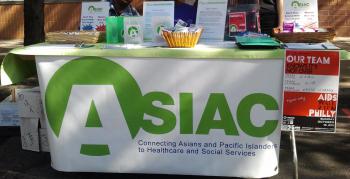Serendip is an independent site partnering with faculty at multiple colleges and universities around the world. Happy exploring!
ASIAC


My work at ASIAC (formerly AIDS Services in Asian Communities), an HIV service organization in South Philly that primarily works with immigrants, has pushed me to recalibrate how I understand peace, conflict, and social justice at very fundamental levels. During the first year I was at ASIAC, I helped to work on a Needs Assesment of the Asian and Pacific Islander (API) immigrant community in Philadelphia. As I wrote in a blog entry, last December, challenges facing HIV-positive Asian and Pacific Islanders range from their limited proficiency in English, to lack of access to insurance, to poor nutrition, to harsh immigration policies. These obstacles have been especially apparent during the work I do with clients, particularly Indonesians who I can talk with directly in Indonesian. It is jarring to realize that many people sought asylum in the US to escape violence in their home countries, only to become sick with a life-long illness here and lack the proper resources to treat it.
In many situations, the pain from structural violence here in the US seems to surpass some of the pain people experienced during actual war. As my role at ASIAC has grown, from a volunteer, to an intern as part of a Praxis III course, to a part-time staff member, it is frustrating that we need to do our work within the framework of exactingly delineated institutional guidelines. Most of our funding comes from government sources, and we have little recourse when we see a community need that doesn’t fit within the confines of any of our grants. Even though we often have the knowledge and the skillset to enact programs that we see as crucial for vulnerable communities, the system that dictates our existence allows for little organizational flexibility. Nonetheless, we still try to implement innovative programming ideas, and are often able to counteract some of the inequalities we see our clients facing on a daily basis. As part of this process, I struggle with figuring out how to evaluate peace, and whether these political and structural issues really do measure on the same scale as war. I also am forced to rethink justice: is the fight for social justice the fight for mere subsistence, like access to food, or the fight for quality of life? I don’t have these answers, but working with ASIAC clients has made me realize that no answer could be straightforward – and that funding agencies need to catch up to this fact.


Comments
Post new comment